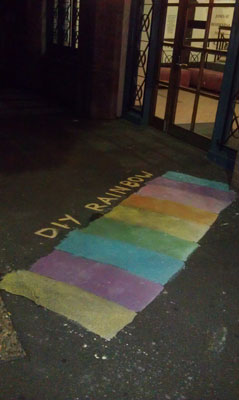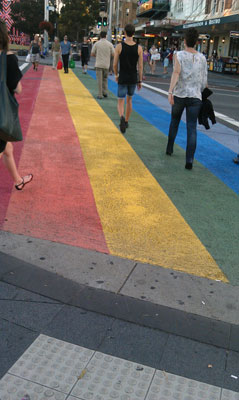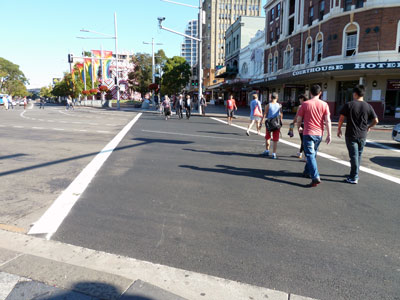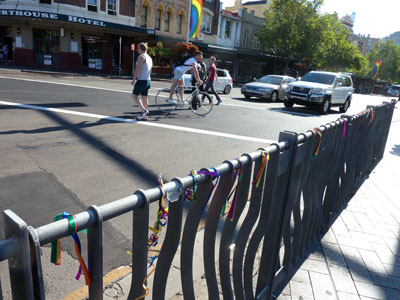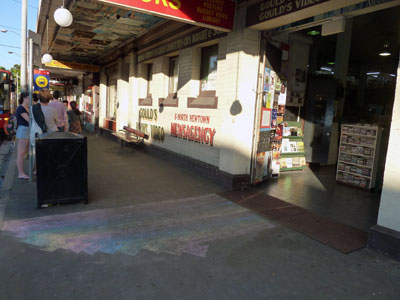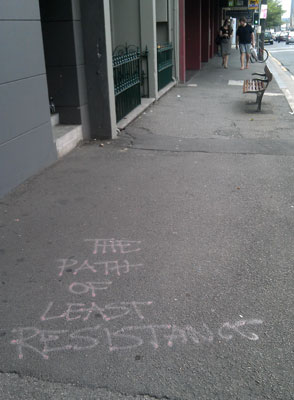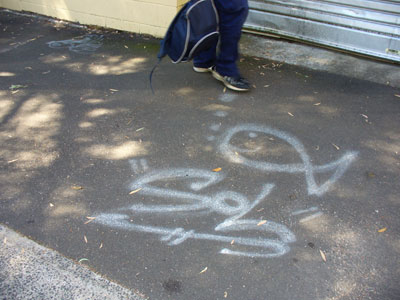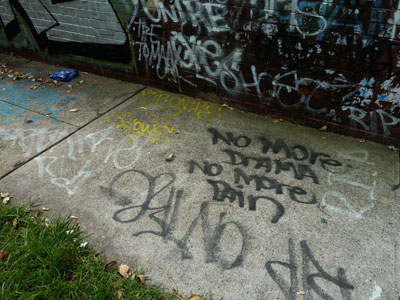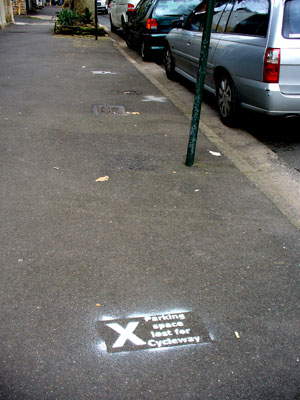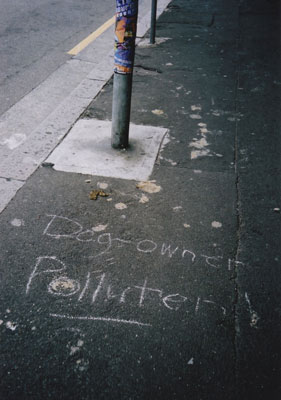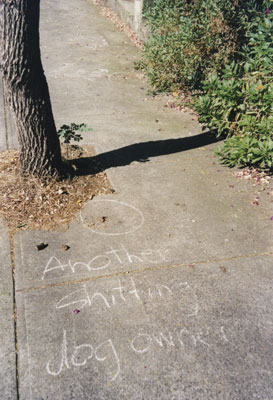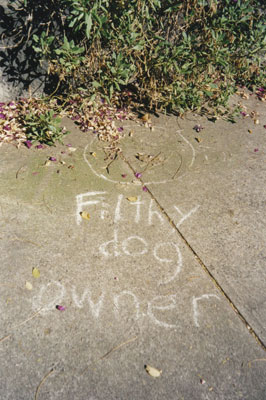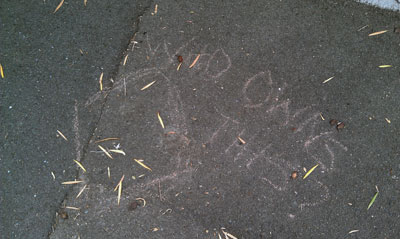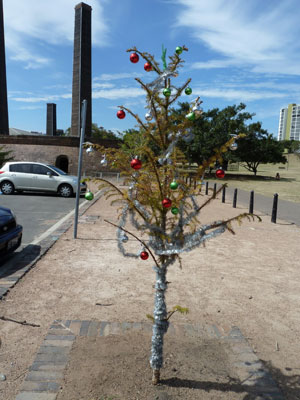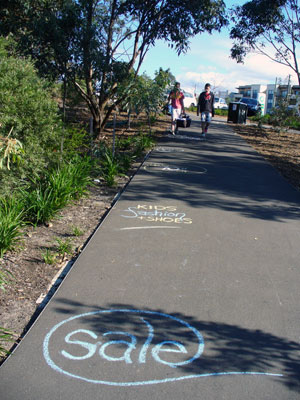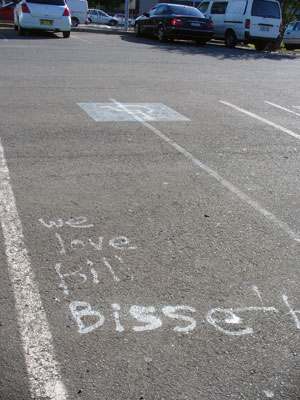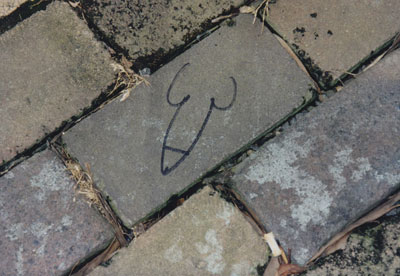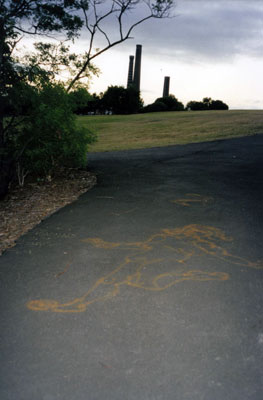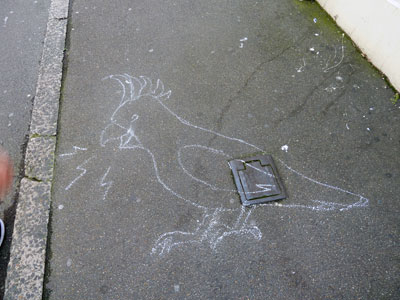In built-up areas the pedestrian crossing is a familiar feature of the horizontal signscape. William Phelps Eno, sometimes known as the ‘father of traffic safety’ is credited with introducing the cross-walk to New York streets in the early 1900s. Once motorized vehicles became popular, something had to be done to protect pedestrians from reckless drivers.
Sydney was one of many cities that soon followed suit. As early as 1912 lines were painted on the road at busy Circular Quay to provide a safe crossing area. Within a few years designated pedestrian crossings in the rest of the city were being marked out with metal studs or pairs of white lines. Designs for crossings have continued to change over the years.

A stopping line at the intersection of Market and Pitts Streets in Sydney, marked out with metal studs, 1929 (City of Sydney Archives photograph, SRC7806, file 034\034213).
For some people, pedestrian crossings represent order, civilization and safety. For others they represent repression and regimentation of people’s behaviour.
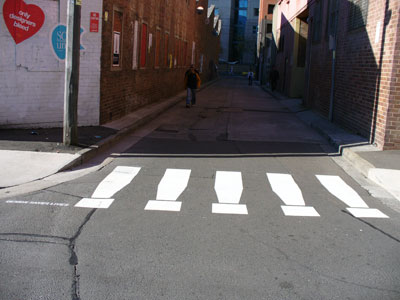
Fanciful pedestrian crossing, ‘Design saves lives’, an entrant in the Eye Saw exhibition in Omnibus Lane, Ultimo during Sydney Design Week, 2006 (photo by meganix).
Some pedestrian crossings have achieved iconic status. The most famous is the crossing featured on the cover of the Beatle’s 1969 LP Abbey Road. Photographed by thousands of fans and tourists emulating the Fab Four crossing the road near their recording studio in single file, this ‘modest structure’ (to quote an official of English Heritage) has been given heritage listing for its ‘cultural and historical importance’.
The original photograph has been recently used in a pedestrian safety campaign in the Indian City of Calcutta.
![Road safety poster using Ian Macmillan’s famous 1969 photograph, issued by the Kolkata [Calcutta] Traffic Police in February 2013.](http://www.meganix.net/pavement/wp-content/uploads/2013/04/BeatlesKolkata_65951375_9358d13f-8536-4294-98c6-2b358c560b1f.jpg)
Road safety poster using Ian Macmillan’s famous 1969 photograph, issued by the Kolkata [Calcutta] Traffic Police in February 2013.
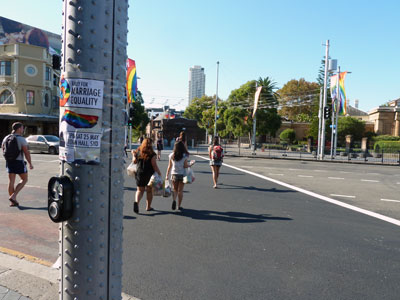
The disappeared Rainbow Crossing at Taylor Square and a notice about a rally for marriage equality, April 2013 (photo by meganix).
However such views were drowned out by the groundswell of outrage that manifested itself in the DIY Rainbow Crossing protest. It is significant that this is all going on at the same time as the parliament of Australia’s neighbour  New Zealand had done what no Australian government will do and legalised same-sex marriage.
Mind you, as Lawrence Gibbons in City News points out, having created a public relations coup with the DIY Rainbow Crossings, Lord Mayor Clover Moore is left with a dilemma. Under policies implemented during her nine-year tenure, any street art, graffiti or posters in the City of Sydney must be removed from any highly visible site within twenty four hours. Under this ruling, the council’s scrubbing machines should be out there right now removing the rainbows.
